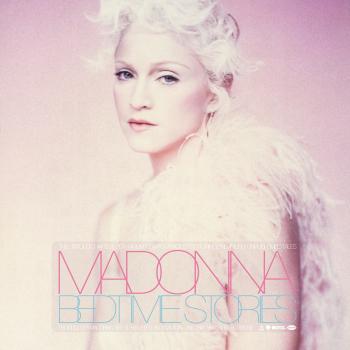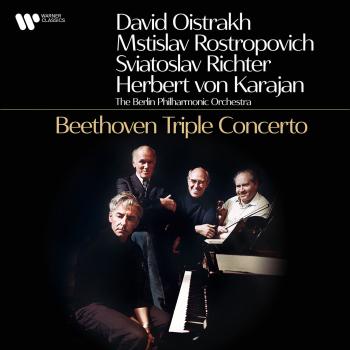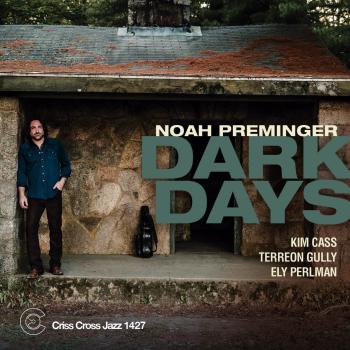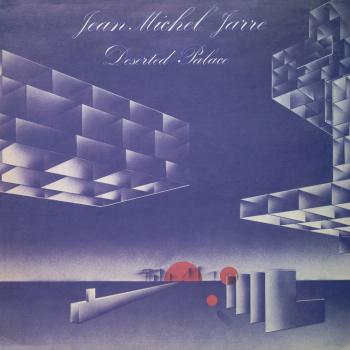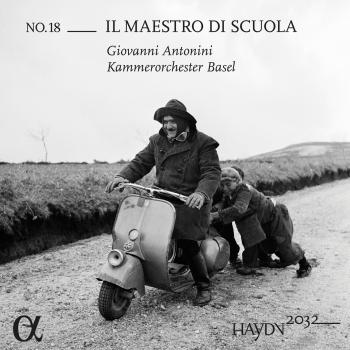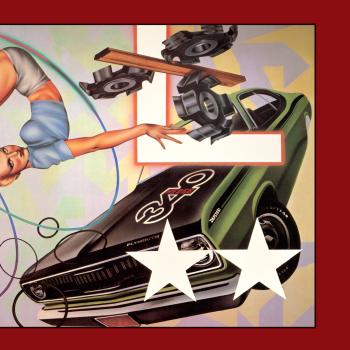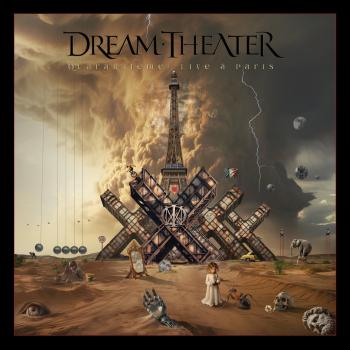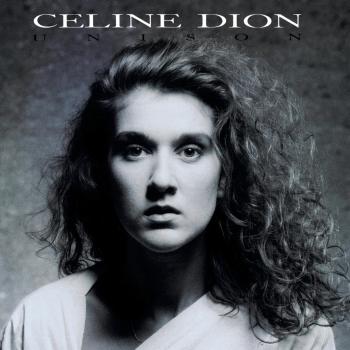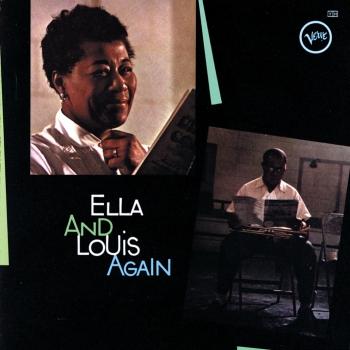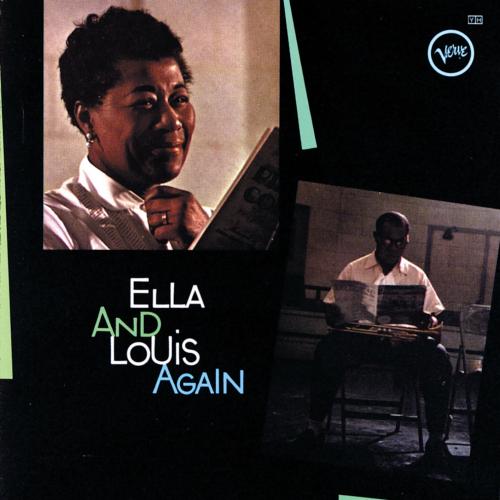
Ella And Louis Again (Mono Remastered) Ella Fitzgerald & Louis Armstrong
Album info
Album-Release:
1957
HRA-Release:
19.05.2016
Label: Verve Reissues
Genre: Jazz
Subgenre: Vocal
Artist: Ella Fitzgerald & Louis Armstrong
Composer: Benny Goodman, Andy Razaf, Benny Goodman, Chick William Webb, Edgar Sampson, Edgar Sampson, Cole Porter, Lew Brown, Vernon Duke, Charles Tobias, Sam H. Stept, George Gershwin, Mitchell Parish, Walter Donaldson
Album including Album cover
I`m sorry!
Dear HIGHRESAUDIO Visitor,
due to territorial constraints and also different releases dates in each country you currently can`t purchase this album. We are updating our release dates twice a week. So, please feel free to check from time-to-time, if the album is available for your country.
We suggest, that you bookmark the album and use our Short List function.
Thank you for your understanding and patience.
Yours sincerely, HIGHRESAUDIO
- 1 Don't Be That Way 04:59
- 2 Makin' Whoopee 03:57
- 3 They All Laughed 03:50
- 4 Comes Love 02:28
- 5 Autumn In New York 06:00
- 6 Let's Do It (Let's Fall In Love) 08:43
- 7 Stompin' At The Savoy 05:16
- 8 I Won't Dance 04:47
- 9 Gee, Baby, Ain't I Good To You? 04:14
- 10 Let's Call The Whole Thing Off 04:16
- 11 These Foolish Things (Remind Me Of You) 07:41
- 12 I've Got My Love To Keep Me Warm 03:13
- 13 Willow Weep For Me 04:20
- 14 I'm Puttin' All My Eggs In One Basket 03:29
- 15 A Fine Romance 03:54
- 16 Ill Wind 03:45
- 17 Love Is Here To Stay 04:01
- 18 I Get A Kick Out Of You 04:21
- 19 Learnin' The Blues 07:11
Info for Ella And Louis Again (Mono Remastered)
Recorded in 1957, „Ella And Louis Again“ re-teams Ella Fitzgerald and Louis Armstrong after the success of their first album and a popular series of concerts at the Hollywood Bowl the previous year. This is not a mere retread, however, and if anything, „Ella And Louis Again“ is the stronger of the two records. Fitzgerald shines particularly brightly, singing with sassy confidence throughout, as if goosed by Pops' infectious good humor. A warmly teasing "Don't Be That Way" opens the record, and the warmhearted joy of that song continues throughout the other 11 tracks. The backing quartet, led by the great Oscar Peterson on piano and featuring guitarist Herb Ellis, bassist Ray Brown, and drummer Louis Bellson, is up to the challenge of playing with these two magnificent singers.
"There isn't much one can say about an album whose title is Ella And Louis Again. The 'again' obviously means they've already done one album together and beyond that, what can you say about two people like Ella and Louis? I doubt that there's anyone today who loves music, who doesn't know Ella Fitzgerald and Louis Armstrong. About all that can be pointed out, I suppose, is that we've again selected some of the best product of some of the best songwriters of our age. The backing, with the Oscar Peterson Trio and Louis Bellson substituting for Buddy Rich, remains, as in the first album, quiet, discreet, swinging." (Norman Granz, from the original liner notes of Ella and Louis Again)
Louis Armstrong, vocals, trumpet (on tracks 5, 7, 9, 13, 17 and 19)
Ella Fitzgerald, vocals
Herb Ellis, guitar
Oscar Peterson, piano
Ray Brown, double bass
Louie Bellson, drums
Buddy Rick, drums
Recorded July 23, July 31 and August 13, 1957 at Capital Studios, Radio Recorders in Los Angeles
Engineered by Val Valentin
Produced by Norman Granz, Bryan Koniarz
Digitally remastered
Louis Armstrong is often presented as the grinning grandfather figure of the old guard; Pops – someone for whom an acute virtuosity and profound individual contribution to the fabric of American music are often muddied if not altogether dismissed in favor of the cartoonish charm of an iconography wholly dependent upon a distinctive vocal and Cheshire smile. But then “Tenderly” plays and the second Ella Fitzgerald’s voice slips in behind Armstrong’s opening trumpet solo, one begins to wonder how that could have occurred. By the time Armstrong’s voice pops out from behind hers, it is clear that undervaluing either talent is a grave mistake. From the 1956 Verve release, Ella and Louis, Armstrong’s performance is as exuberant and assertive as it is artfully restrained – almost as if he might be saving something for later.
Ella Fitzgerald’s girlish birdsong cuts the burnt sugar of Armstrong’s easy conversation like a shot of vinegar; the poise and exacting precision of her performance belie a lack of formal training. Perfect pitch and a terrible habit of using her ear to bend a few syllables into taffy in a matter of several notes make the few limitations of her vocal difficult to pinpoint. What is readily apparent about the pair is how close to perfection their combination truly is, precisely because of their differences. In stark contrasts there exists a gray area in which things could go horribly wrong or terribly right. In the case of Ella Fitzgerald and Louis Armstrong recording a debut album of duets that included eventual classics like “They Can’t Take That Away From Me,” “April In Paris,” “The Nearness of You,” and “Cheek to Cheek,” Norman Granz hit the ball out of the park on the first try.
Jazz impresario and founder of the Jazz at the Philharmonic concert series – an almost limitless fount of talent born from an ambitious gathering in Los Angeles in 1944, Norman Granz was the mastermind behind a number of unlikely combinations of musicians recording and collaborating across the genre as his events and ear rose to prominence. A champion of equal pay for all artists and infamous for his refusal to play shows to segregated audiences, Granz became the intentional and very exacting shepherd of Fitzgerald’s career – demanding first that she take down the walls of her bebop box and take to the canon of American standards with reckless abandon.
Ella Fitzgerald was among the laundry list of talents performing at Granz’s shows on a regular basis. Initially concerned with licensing and releasing recordings of his shows through other labels, by 1955 Granz had changed his mind. Quite possibly on the heels of Fitzgerald’s departure from Decca Records shortly before, Granz – by then her manager – founded and built Verve Records around her voice. The Cole Porter Songbook became the project that launched the label and simultaneously kept Fitzgerald’s career from staling into bop-heavy oblivion. Having moved from orphan to doyenne of the swing bandstand very quickly, Fitzgerald had ridden the wave of that era well past its crest; it could be argued that that was all she knew and it could be also be as simple as that was what worked. With the exploration of new and different compositions, it seems that Fitzgerald found her voice under the watchful eye of Granz.
Louis Armstrong had been performing and recording for fifteen years before Ella Fitzgerald emerged, and the influence of his work is as apparent in the horn player’s sensibility that characterizes her scatting as it is in her playful imitations of Armstrong’s unmistakable voice. We find Fitzgerald lending her playfully endearing gravel-dipped scat to the end of “Tenderly;” a reverential tribute to an improvisational master whose characteristically throaty timbre and singing style parallel the bright saccharine punch and walking drawl of his trumpet solos. In cahoots with Granz by the mid to late ’50s, Armstrong recorded three duet albums with Fitzgerald and two solo releases for Verve; those included an orchestral arrangement conducted by Russell Garcia and a collaboration with the Oscar Peterson Trio. With two huge talents at his hip, Granz had the firepower to create a very dangerous combination and did so accordingly. The recordings from Fitzgerald and Armstrong are presented as benign and classically romantic – the same oversimplification of tenderness found in dogs sharing an accidental kiss at the bottom of a plate of spaghetti. While that sentiment may not be the worst thing to have attached to a body of music, as it increases the net their recordings cast, it also makes it easy to overlook the mastery of their performances when a recording is suggested as background music; the place where all great tunes go to die.
Ella and Louis and Ella and Louis Again, are both much lighter, finger-snapping fun than their third release, Porgy and Bess, which pulls from the Gershwin catalog to offer two giant talents a stab at the songs of an equally large Broadway production. Already full of character, the compositions are given new life by Fitzgerald especially, who peeks in and out of an almost operatic vocal – playing with a lower register and daring the standard’s orchestral arrangement to meet her on a tiny bandstand in Harlem; to step outside of the box of traditionalism as she has stepped out of her own. “My Man’s Gone Now” is one of the most emotionally charged performances you may find from Fitzgerald, whose career is more frequently typified by everything bubbly. The song is punctuated by a brick wall of a crescendo that unravels into ribbons of airy runs. Satchmo, on the other hand, seems to challenge the huge orchestral arrangement behind them to relax and have a little fun – something that absolutely happens on “There’s A Boat…” right before he wails himself down a dark canal in search of his woman on “Bess…” a song that even in a fit of sadness finds Armstrong sounding distinctively hopeful.
In a matter of three recordings, they may have done more groundbreaking work together than either had done without the other – this is especially likely for Fitzgerald whose career was floundering, despite her incomparable talent, prior to their collaboration. Raising the bar for duets – a trend that has more recently become watered down by less talented or thoughtful combinations of artists – they were massive individual talents who combined to create platforms where each could shine alone and in tandem they would become a tour de force whose interpretation of standards is excellent in ways that discourage imitation. Artists whose recordings will remain the kinds of classics that people – from those in the establishment to those in their homes after a hard day’s work, will continue to refer to with love and deference for the foreseeable future; “Morning time, and evening time, and summer time, and winter time.” (Words by Karas Lamb)
This album contains no booklet.

